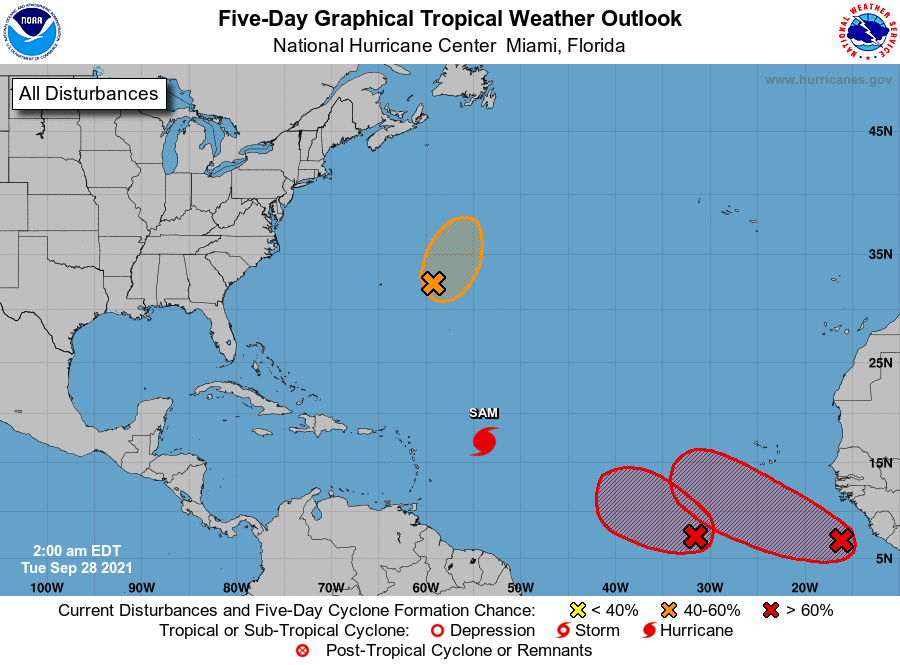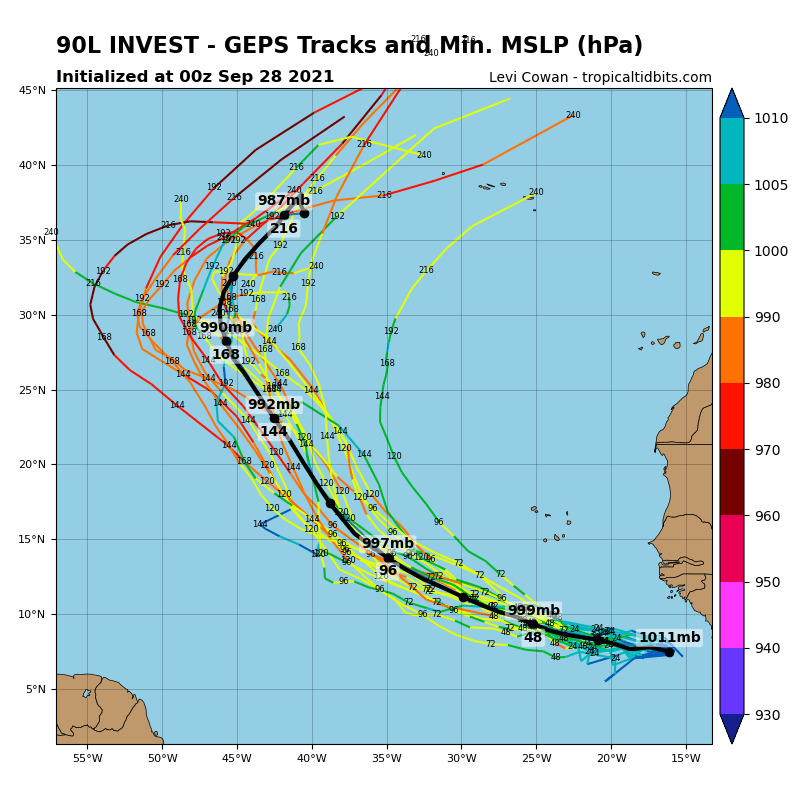CHRISTIANSTED — Hurricane Sam continued to feed on warm water as a powerful Category 3 storm with some partners likely to join it in the Atlantic basin in the form of three other disturbances.
The seventh hurricane of the year has maximum sustained winds of 120 mph and is stumbling northwest at 9 mph, according to the National Hurricane Center’s 5 a.m. update.
The system had 130 mph winds rated as a Category 4 hurricane early Monday, but lost stamina throughout the day.
Sam’s reach is relatively small, with its hurricane-force winds reaching 40 miles from its core and its tropical-storm-force winds extending 125 miles. Sam is 610 miles east from the northern Leeward Islands.

VITEMA Director Daryl Jaschen said Monday Sam has a three percent chance of impacting St. Thomas and St. John with tropical storm force winds late Wednesday night or early Thursday morning.
“There are no coastal warnings or watches in effect at this time,” Jaschen said from Government House. “Sam is projected to pass within 400 miles of St. Thomas and St. John late Wednesday evening early (Thursday) morning. Sam is a small, but strong hurricane, with hurricane-force winds going out 30 miles and tropical storm force winds going out 105 miles. There’s only a three percent chance of tropical storm force winds impacting St. Thomas or St. John as it passes. However, there is a concern of strong ocean swells that may cause life-threatening maritime conditions and strong rip tides. U.S. Coast Guard is also monitoring Hurricane Sam and is ready to review the conditions if the approaching hurricane generates significant swells in the territory.”
The NHC agreed with Jaschen, saying that Sam should generate swells that will reach the Lesser Antilles on Monday and impact the islands for the next several days.
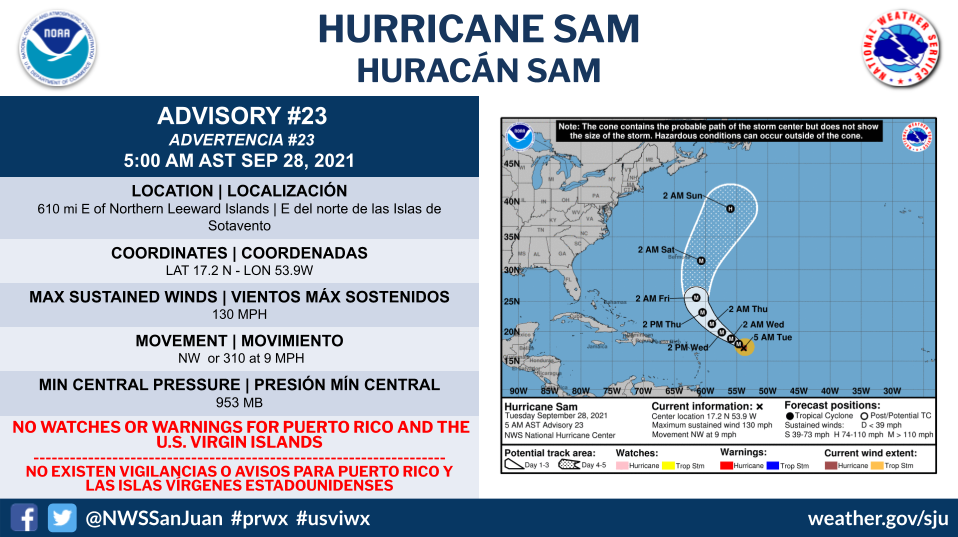
Meteorologists think Sam’s power has peaked, but Atlantic conditions should allow the storm to maintain major hurricane strength over the next couple of days. Sam’s impressive inner core deteriorated overnight, likely due to some dry mid-level air impinging on the western side of the circulation, the NHC said.
To the northwest of Sam, an elongated area of low pressure, previously known as Peter’s remnants, is located a few hundred miles east of Bermuda. The disturbance remains at a 60% chance of reformation in the next two to five days.
Atlantic conditions are ripe for development, and Peter could briefly reform into a tropical depression again today. However, Atlantic conditions stop being favorable tomorrow.
Further east, disorganized showers and thunderstorms are associated with a broad area of low pressure located several hundred miles southwest of the Cabo Verde Islands.
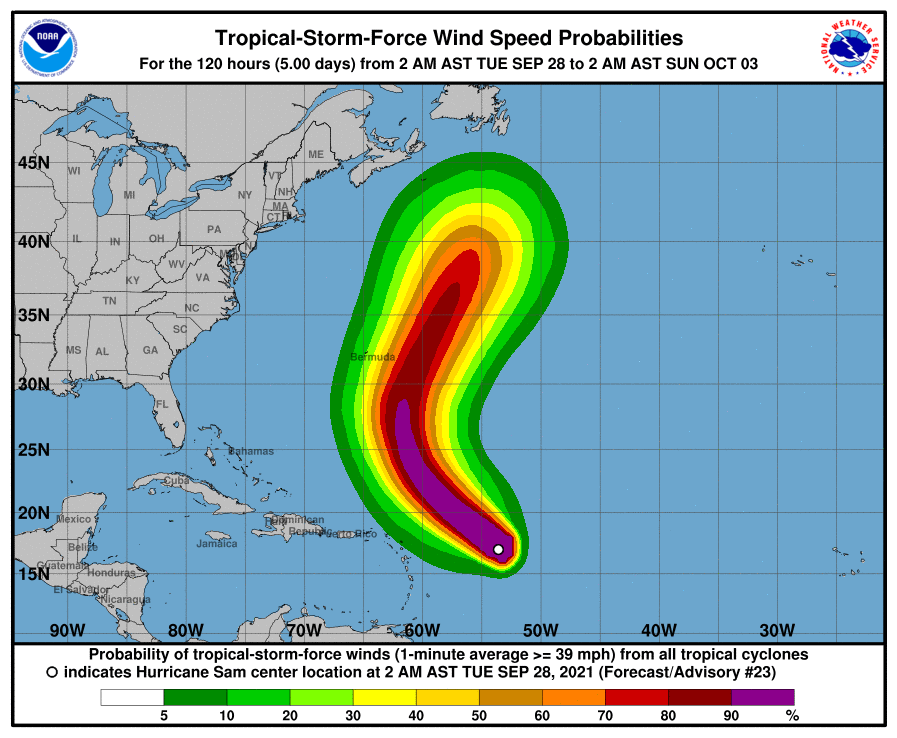
A tropical depression is possible while the system moves westward to west-northwestward at 5 to 10 mph over the central tropical Atlantic, according to the NHC 8 p.m. Monday update. This system has a high 70 percent chance of developing in the next 48 hours and a 90% chance in the next five days.
In addition, another tropical wave continued to produce disorganized showers off the African coast on Monday. It moved into a favorable Atlantic environment for development, the NHC said. The wave is forecast to move west between 10 to 15 mph. It has a 70 percent chance of developing in the next 48 hours and a 90 percent chance of forming in the next five days.
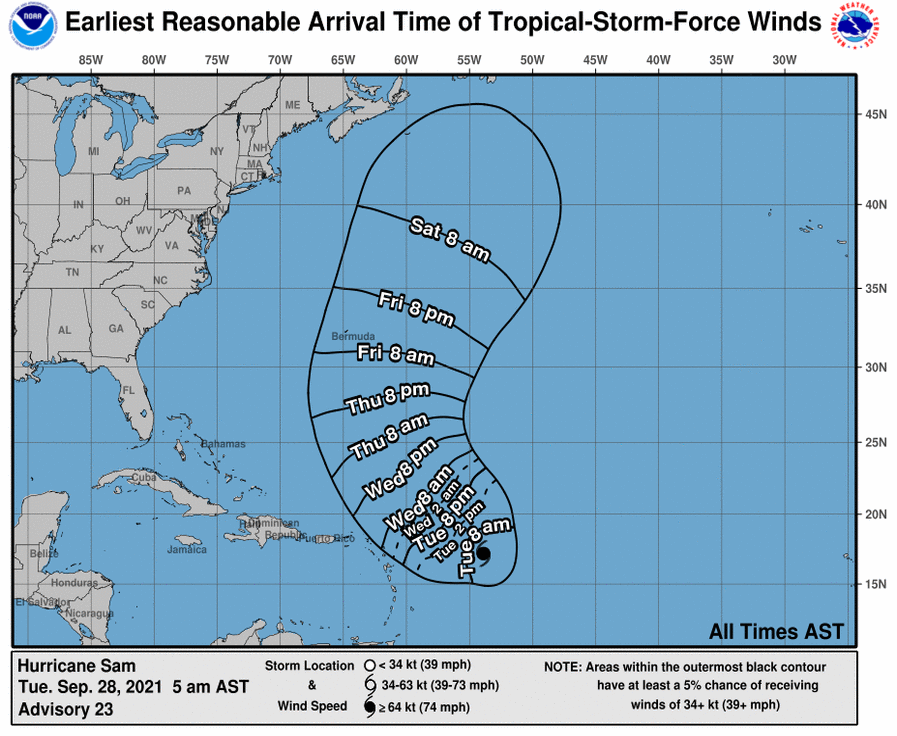
So far, the 2021 Atlantic hurricane season with 19 named systems, including Teresa, is the third most active behind 2020′s record year and 2005. Sam is the seventh hurricane to form so far.
The next name on the list is Victor, with only Wanda left before the NHC will begin using a new set of alphabetical names chosen for busy hurricane seasons. Only 2005 and 2020 ever had to venture beyond the initial list, but the storm names were given Greek letters such as Tropical Storm Alpha in previous years. Confusion in similar-sounding Greek letters, such as Eta and Theta, though, led to the shift.
If 2021 reaches the new alphabet, the first named storm will be Adria.
The hurricane season runs through November 30.

